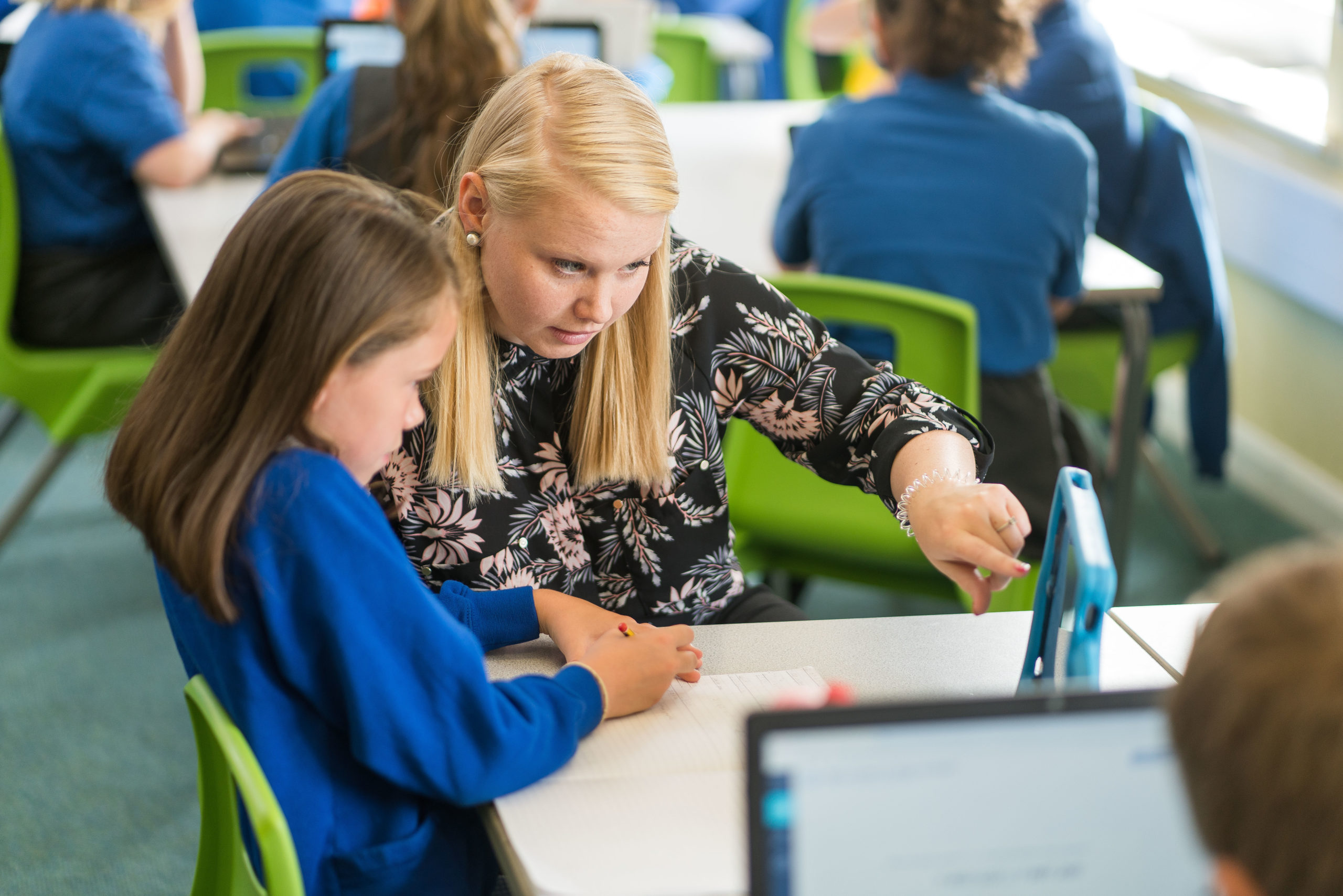Estimated reading time: 8 minutes
Redlands Community School’s vision is to provide an inspiring and enthusiastic learning environment that will foster a lifelong love of learning. Educating 400 primary pupils in a village between Leicester and Loughborough, the school views the effective use of technology as an important part of achieving this vision.
We spoke to Year 6 teachers Laura Riley and Sarah Lamble to learn more about how they are using CENTURY to differentiate learning and target interventions to help every learner reach their potential.
Fitting CENTURY’s content into the curriculum
We use the platform predominantly for maths, because that has been the biggest need for our children over the last few years, but also for grammar and reading and we’ve recently started to use it a lot more for science.
We really like the way that the platform breaks the content down into different topics. For example, we were looking at area and perimeter this week, and there’s a nugget on there all about working out the area of rectangles. So you can really hone in on small areas of the curriculum.
Integrating CENTURY into teaching
As teachers, we all know that the curriculum is jam-packed and that sometimes when you get given new things to try out, you just think ‘how am I going to fit this in?’, but CENTURY is really easy to fit into your timetable and really easy to integrate into your learning. At Redlands, we have been using it in quite a few different ways.
We like to use the diagnostics on the platform not only as a baseline assessment before we start a topic, but also as an end of unit assessment to check whether or not a child has really grasped understanding. That way, we can see which of those children require further support and interventions before moving onto the next topic.
We also have a thirty minute slot every week dedicated to CENTURY, and what we do in that time depends. One week we might do some reading or grammar nuggets if that’s something that has been identified as an area of need, whereas other weeks we just let them work through their pathway.
This year, we’ve also been increasingly using it for blended learning within lessons. For example, this week I felt as though I needed just one more lesson on addition and subtraction with my class, but I had some children who were fairly confident with it and didn’t need any extra support. So whilst myself and my LSA were working with the children who needed help, the higher-attaining students could just get on with CENTURY independently and I knew that their personalised pathway would ensure they had access to the learning they need.
It’s been particularly useful to implement as part of a blended learning approach within science lessons, so you can have some children using the electricity equipment practically and another group completing some related nuggets on CENTURY to allow the sharing of equipment.
We also run after school clubs, depending on the needs of the curriculum, and using CENTURY during those sessions is a massive workload saver for teachers. We don’t have to plan anything extra, we can just assign the nuggets that we know will benefit the children the most.
We also use it a lot as a homework tool, so our Year 6 students have a nugget to complete each week at home. The videos on the platform also help parents to support their child’s learning because they can see what methods they need to be using and so on, particularly in maths.
Making use of the data
The data you get from CENTURY is fantastic, and it provides you with a lot more than just an overview of children’s scores. A few of the things that we find it really useful to do with the data are;
- Targeting interventions as soon as misconceptions arise. The questions are automatically marked and that data then instantly shows up on your Teacher Dashboard, which is invaluable because it allows you to assess children’s understanding of concepts right away. For example, if a class is set a nugget during a lesson, I can see if their scores are amber or yellow, and if so, I can iron out any problems or misunderstandings before we move onto the next part of the lesson;
- Seeing the time spent answering questions and looking at the learning resources. If a child spent one minute on each of the first five questions and four seconds on the final few in a set, then you can see clearly that they have rushed it, and similarly, if they only watched 10 seconds of a video and performed poorly in the questions, then the children will get prompted to go back to the learning material;
- Checking how many attempts a child has taken on a nugget. We obviously tend to see that over time, the more attempts that the child has, the higher their result. Seeing this also encourages the children to keep trying if they don’t get it right away;
- Looking at the actual answers that children have given if they are incorrect, which is really helpful as a teacher. You can check whether a pupil has gotten a question completely wrong and needs a lot of support, or whether they’ve just made a minor mistake.
Differentiating learning
Once you’ve gotten all of that data from CENTURY, you can also use the platform to differentiate learning accordingly. A fantastic thing about that is that it’s so discreet. The pupils won’t know that the person sitting next to them is learning something completely different to them, because it’s on their own device and all they know is that they’re working through whatever nuggets are in front of them.
One of the things we love about the platform is that you can assign nuggets and assignments to not only whole classes, but also specific students. For example, if a specific set of children have struggled with area and perimeter, you could set an assignment to consolidate and support their understanding of that so that they will be upto speed for the next lesson and won’t fall behind.
Learn more about how CENTURY can supercharge the teaching and learning at your primary school.




